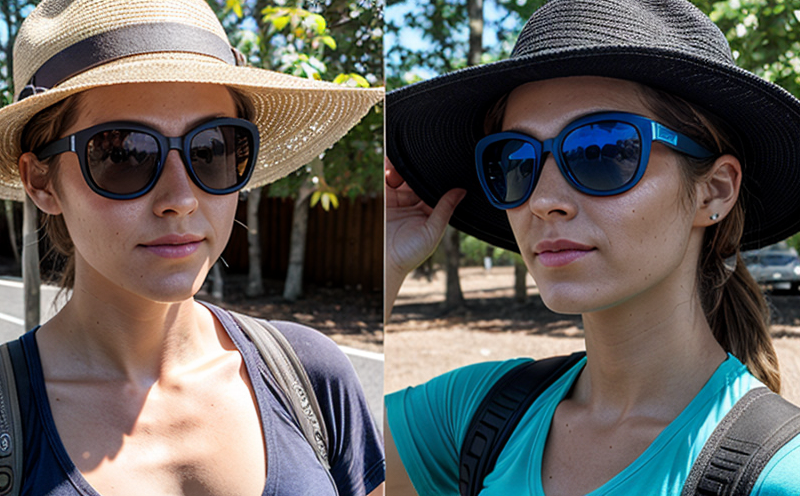ASTM G154 Standard practice for UV exposure of nonmetallic materials Fluorescent lamp method
The ASTM G154 standard is a widely recognized methodology that provides a standardized approach to simulating the effects of ultraviolet (UV) radiation on nonmetallic materials. This practice, first published in 1983 and most recently updated in 2020, is crucial for industries like textiles, coatings, plastics, and adhesives, where UV light can degrade material properties over time.
The primary purpose of ASTM G154 is to provide a reproducible method for exposing nonmetallic materials to UV radiation using a fluorescent lamp. The test simulates the effects of natural sunlight by filtering out infrared and ultraviolet A (UVA) rays while allowing UVC and UVB to pass through. This setup mimics solar UV radiation, which can cause significant degradation in material quality.
Materials tested under ASTM G154 include textiles, paints, varnishes, and other products that are exposed to outdoor environments where they might be subjected to UV light. The standard is particularly important for ensuring the longevity of materials used in applications such as outdoor furniture, automotive parts, and building facades.
The fluorescent lamp method specified in ASTM G154 uses a combination of UVA-340 lamps and an artificial weathering chamber. This setup ensures that the test conditions are consistent and replicable across different labs, which is essential for quality control and regulatory compliance.
Test specimens must be prepared according to specific guidelines provided by ASTM G154. This includes ensuring that the materials are free from contaminants, properly cut to size, and adhered to a backing if necessary. The exposure time can vary depending on the material being tested, but it is typically set for 200 hours or more.
The results of the test are analyzed by comparing the color change and other physical properties of the exposed specimens with those of unexposed controls. This comparison helps determine the stability of the materials under UV exposure and provides insights into potential durability issues.
ASTM G154 is not just a theoretical standard; it has real-world applications that are critical for industries reliant on outdoor exposure data. For example, in the textiles sector, understanding how UV light affects fabric color and texture can help manufacturers choose materials that maintain their aesthetic appeal over time. In the automotive industry, this test ensures that exterior parts retain their appearance and functionality even after long periods of exposure to sunlight.
The fluorescent lamp method used in ASTM G154 is cost-effective compared to outdoor testing because it allows for controlled conditions within a laboratory setting. This control is invaluable when multiple factors need to be isolated or when rapid prototyping is required. Additionally, the test can be conducted year-round, eliminating seasonal variations that might affect outdoor tests.
Understanding the parameters involved in ASTM G154 also helps in optimizing product design and formulation. By identifying how different materials react under UV exposure, manufacturers can make informed decisions about material selection and processing techniques.
Scope and Methodology
The scope of ASTM G154 is broad enough to cover a wide range of nonmetallic materials that are exposed to outdoor environments. It encompasses textiles, plastics, coatings, adhesives, and any other similar materials. The standard specifies the use of UVA-340 lamps, which emit UV light at 365 nanometers, as well as an artificial weathering chamber. This setup is designed to replicate natural sunlight, particularly focusing on the UVA component that is most responsible for material degradation.
The methodology begins with preparing the test specimens according to ASTM G154’s precise guidelines. Specimens must be cut to a standard size and shape to ensure uniform exposure across all samples. They are then placed in the artificial weathering chamber, where they are exposed to UV light for specified durations, typically ranging from 200 hours up to several thousand hours depending on the material being tested.
During the test, temperature and humidity levels inside the chamber can be controlled to simulate different environmental conditions. This controlled environment ensures that factors other than UV exposure do not influence the results. After the specified exposure time, the specimens are removed from the chamber and evaluated for changes in color, texture, and other physical properties.
Comparisons between exposed and unexposed controls provide a clear picture of material degradation due to UV exposure. This analysis is crucial for understanding how materials will perform under actual outdoor conditions. The results can be used to make decisions about product design, formulation, and even the choice of raw materials.
Benefits
- Predictive Testing: ASTM G154 allows for the prediction of how nonmetallic materials will perform under long-term UV exposure. This is invaluable in industries where material degradation can lead to significant financial losses.
- Consistency: The fluorescent lamp method ensures consistent test results across different laboratories, making it easier to compare data and ensure compliance with industry standards.
- Rapid Prototyping: By simulating outdoor conditions in a controlled environment, ASTM G154 enables rapid prototyping and testing of new materials and formulations without the need for lengthy field trials.
- Sustainability: Understanding how UV exposure affects materials helps manufacturers develop more sustainable products with improved durability and reduced environmental impact.





